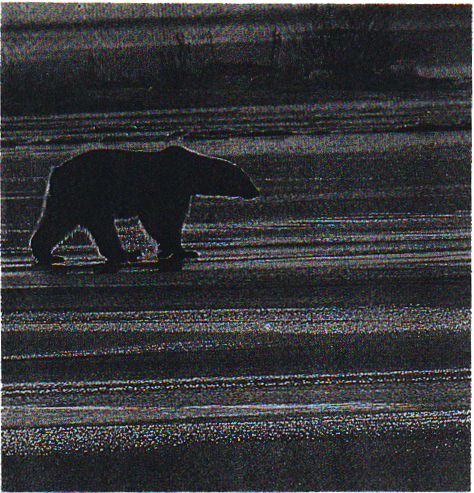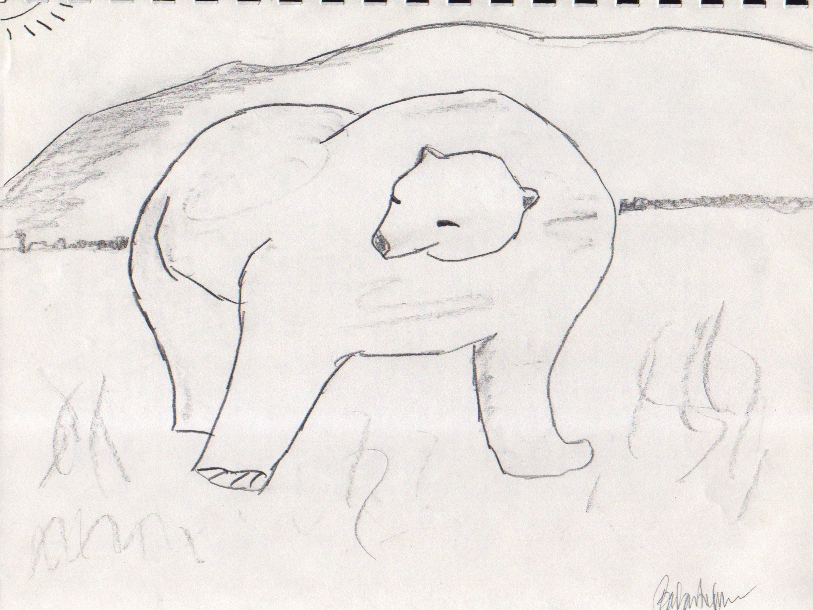 This collection of student work is from Frank Keim's classes. He wants to share these works for others to use as an example of culturally-based curriculum and documentation. These documents have been OCR-scanned and are available for educational use only.
This collection of student work is from Frank Keim's classes. He wants to share these works for others to use as an example of culturally-based curriculum and documentation. These documents have been OCR-scanned and are available for educational use only.Special | A | B | C | D | E | F | G | H | I | J | K | L | M | N | O
P | Q | R | S | T | U | V | W | X | Y | Z | ALL
Polar Bear by Tina Papp:
Polar Bear
Polar bears (Ursus maritimus) live mostly in the far North around the Arctic Ocean, in Alaska, Canada, Greenland and Siberia. Their favorite hunting grounds are on the edge of the Arctic ice pack. Their usual prey consists mostly of sea animals like fish, seals and walruses, but if they are really hungry they may go to a dump area and look for food. Polar bears are the best swimmers of all the bears because they do more swimming in the winter while the other bears are sleeping in their dens. They can swim up to 6 miles an hour. Although Polar bears are big in size, they can run very fast. A Polar bear can run up to 25 miles an hour. They can even keep up with a reindeer. Polar bears have smaller heads and longer necks than Brown bears. They also have a slender body to help them swim faster and easier. A fully grown Polar bear weighs up to 1600 pounds and is nine and a half feet long. The fur coat on Polar bears helps them keep warm through the cold winter. The color of their coat is white with a yellow tinge. Mother Polar bears can have up to two cubs a year. The cubs weigh up to one pound. They stay with their mother till they can live on their own and eat on their own. They stay up to 2 years with their mother so they can learn how to hunt and survive on their own Most of the time the males don't go into dens, but the females do because they have to give birth to the cubs. The males hunt most of the time and it is dangerous for the young cubs if the male finds them. The cubs would be eaten by the male and the mother could be hurt in a fight. Up until 1972 Polar bear hides were very valuable. Hunters killed the bear just for the hide. Oil company employees also destroyed the homes of Polar bears. By 1973, Polar bears became threatened and Canada, Russia, and the United States had to sign an agreement prohibiting most sport hunting.
By:Tina Papp | |
|





